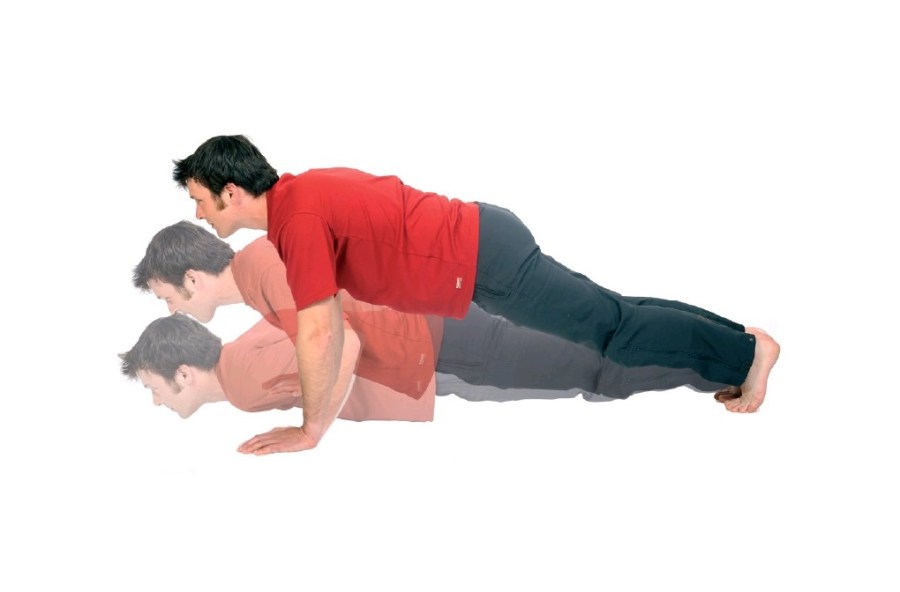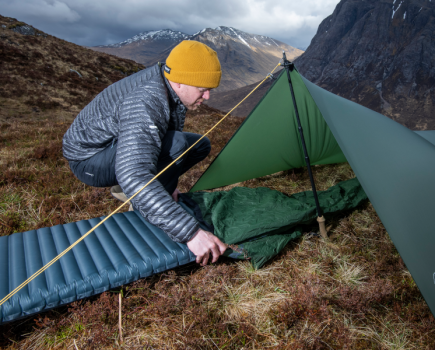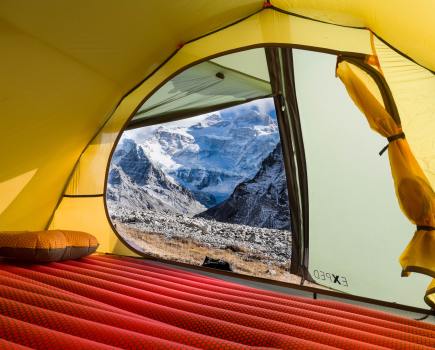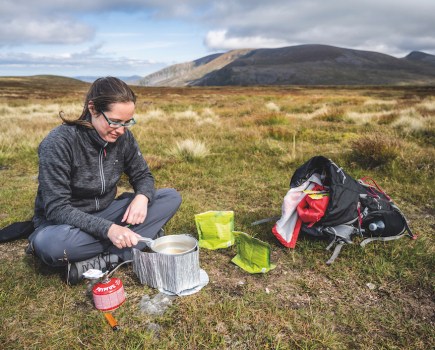Chris Highcock is a hillwalker and fitness enthusiast, and the author of the ebook Hill Fit. Here are his recommended exercises to build essential strength and flexibility, and make your days in the hills safer and more fun
Hip Flexor Stretch
To loosen hip flexors tightened by excessive sitting
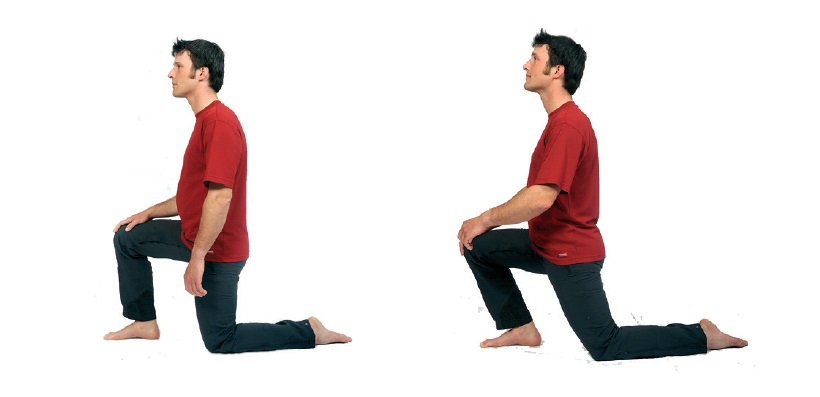
With hips square, feet parallel, kneel on one leg with the other leg bent at a right-angle and your foot fl at on the floor. Squeeze your buttocks and push your pelvis forward, keeping the torso upright. The hips lead and most of your weight will stay on the rear knee. Hold for 90 seconds. Relax. Do this on both sides. When your left foot is forward you are stretching the right hip flexors. To make things harder, raise your rear foot, on a chair or even a rucksack.
The Push-up
The push-up is a fundamental upper-body exercise developing strength in the pushing muscles of the chest, triceps and shoulders but also training postural control and core stability
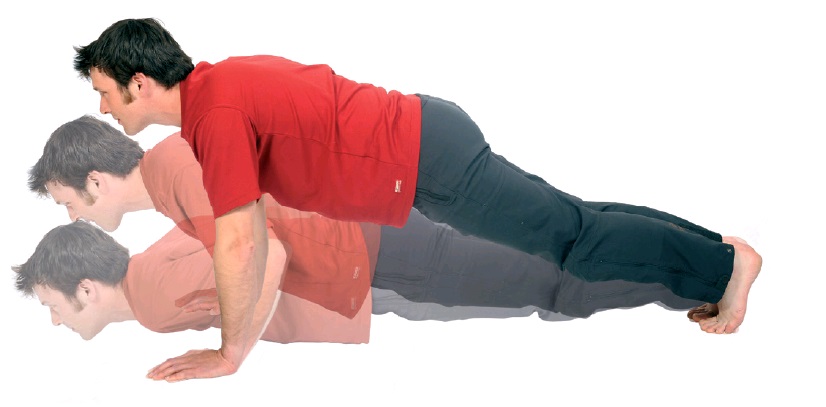
Start off in the “push-up plank position” – arms straight, hands shoulder-width apart, with a straight line running from your head to your ankles. Hold this position, gradually building up (10 seconds, 20, 30… 45) until you are able to hold it for one minute. When you are ready, train the push-ups. Keep the straight line from ankles to head and bend the arms to lower the body until your upper arms are parallel with the floor, then reverse direction. Keep your elbows in rather than flared out. Body weight should be lifted by the arms; don’t be tempted to use the lower half of your body to pull yourself up. This is all about posture. Move smoothly and under control. If you struggle, keep working the push-up plank position, while practising push-ups from your knees.
The Plank
The plank looks simple but is tough, with great benefits in terms of stability and endurance in the lower back, hips and abdominal muscles

Get in the plank position with your forearms and toes on the floor; keep your torso straight and rigid with your body in a straight line from ears to toes with no sagging. Your neck should be relaxed, with eyes looking at the floor. Hold this position for 10 seconds. Over time, work up to holding it for 30, 45, 60 seconds or more.
Cat Camel
Helps to restore movement in all three areas of the spine
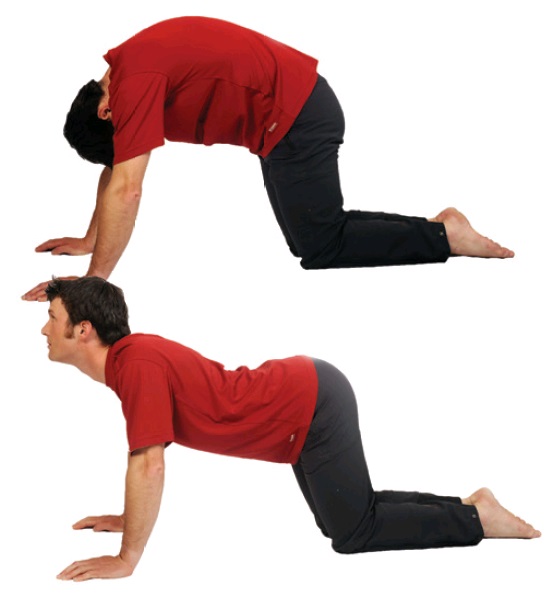
On all fours, with your hands under your shoulders, your knees below your hips, and keeping your abdominals tight, arch your back like a cat: drop your head and tuck your hips under your torso. Then sag down as though between the humps of a camel: lift your head and roll your hips out from under your lower torso. Do this exercise five to eight times. This is a mobility exercise, not a stretch. It will help your brain to map a natural motion, so focus on movement, not pushing the end ranges. All three sections of the spine should move together.
Glute Bridge
This exercise is designed to activate the gluteal muscles. It can also be used as a warm-up before exercise

• Lie flat on your back, legs bent, heels pushing into the floor.
• Squeeze your buttocks together and push through the heels to lift the pelvis. Make sure you begin by actively contracting your glutes or else the hamstrings will contract first. Think of holding a 50p piece between your buttocks.
• Try to get your hips in line with your upper legs.
• Keep the hips raised and buttocks clenched for 10 seconds, then relax. Move slowly and do for five repetitions.
Bird Dog
This exercise removes support from the standard plank, forcing the body to compensate. It is designed to build endurance
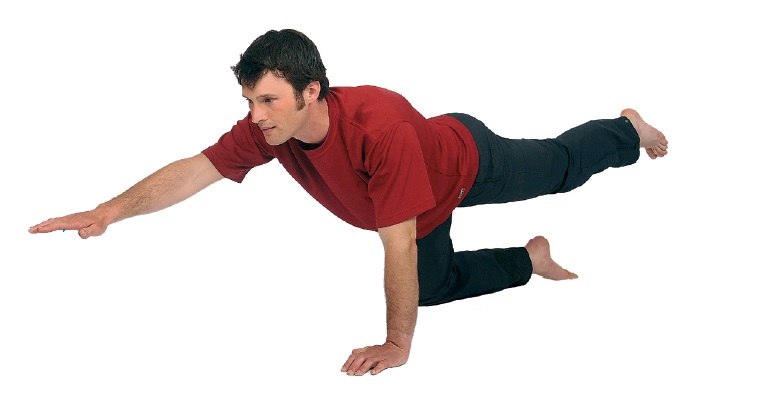
On hands and knees, slowly lift and extend an arm and the opposite leg, to form a straight line from your extended hand to the opposite foot. Hold the pose for 10 seconds. Make sure your abdomen is braced, as if you are expecting someone to poke you in the stomach. Lower the hand and knee, “brushing” the floor, then raise them for the next repetition. After four repetitions, swap sides and do another four.
Clamshell
Clamshells a re a quick and easy way to strengthen the external rotators of the hip. They will help to activate the gluteal muscles, assist with stability in the pelvis and improve lower back health
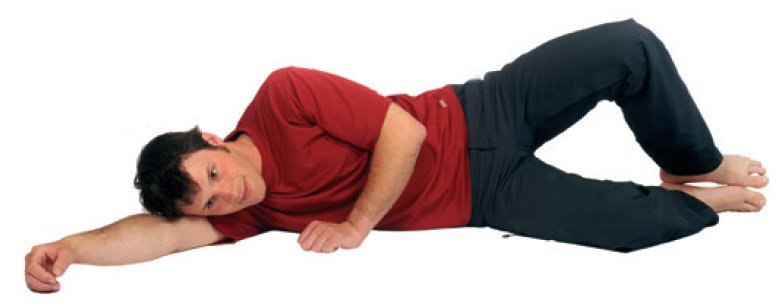
Lie on your side with both legs bent, feet in line with your torso. Then open your legs while ensuring that your feet remain together. Only raise the leg to about 45 degrees. You should feel this in the buttock of the working leg. Perform 15-20 repetitions per leg.
The Squat
Many experts pick the squat as the single best exercise. It works some important muscles for walking – especially your hips and thighs – and trains a pattern that is essential to everyday life
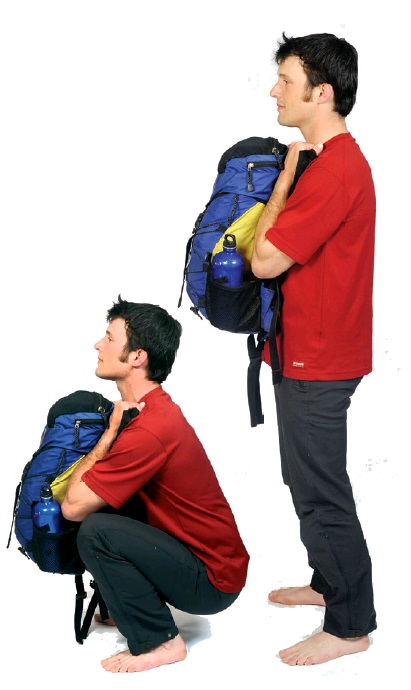
Take a shoulder-width stance and flare your feet slightly. Stick your bum back while bending at the knees and descend in-between the knees, don’t just push your hips backwards. Keep your spine straight (not vertical) as you descend – to help this, swing your arms up. Ideally, keep your heels on the floor and descend until your hips are below your knees, but work within your ability and improve the range of movement over time. Move slowly, maybe 5 seconds to descend and 5 to come up. As you get stronger, add resistance by holding a rucksack.
Photographer: Chriss Watt. Model: John Chivall

